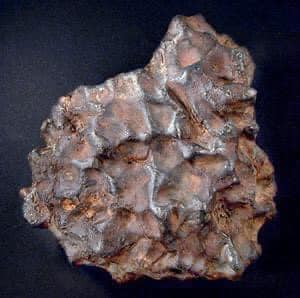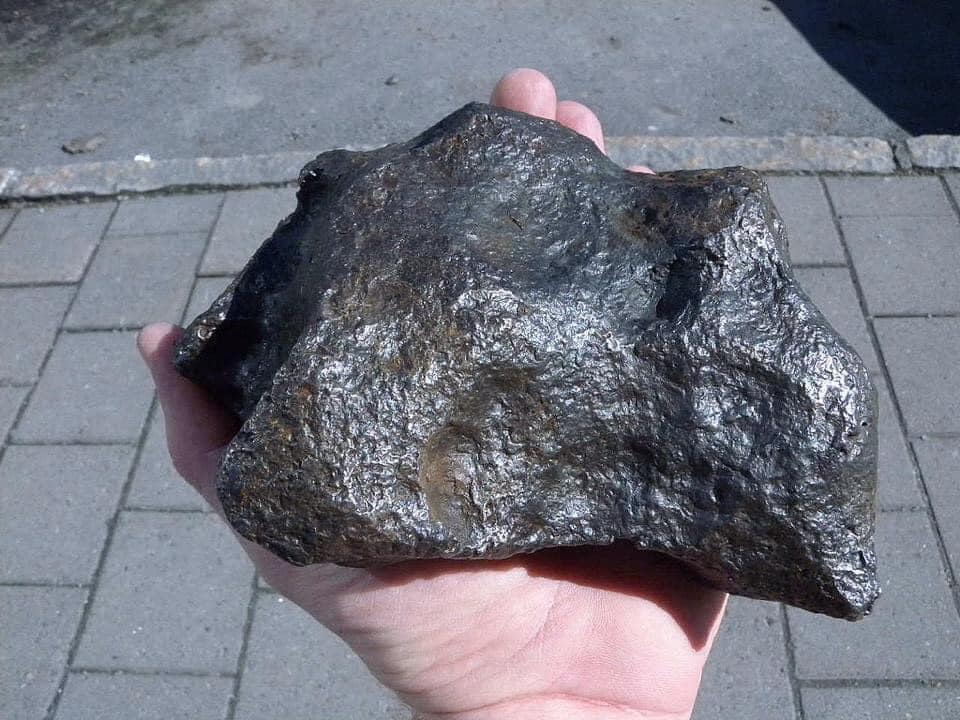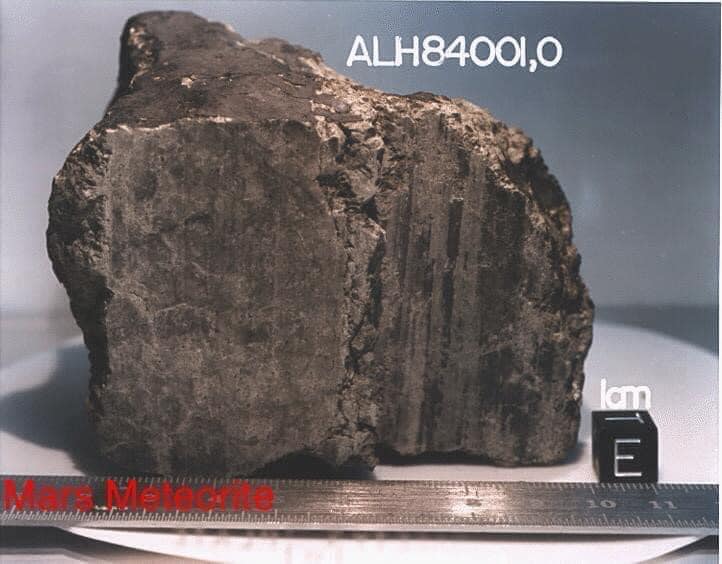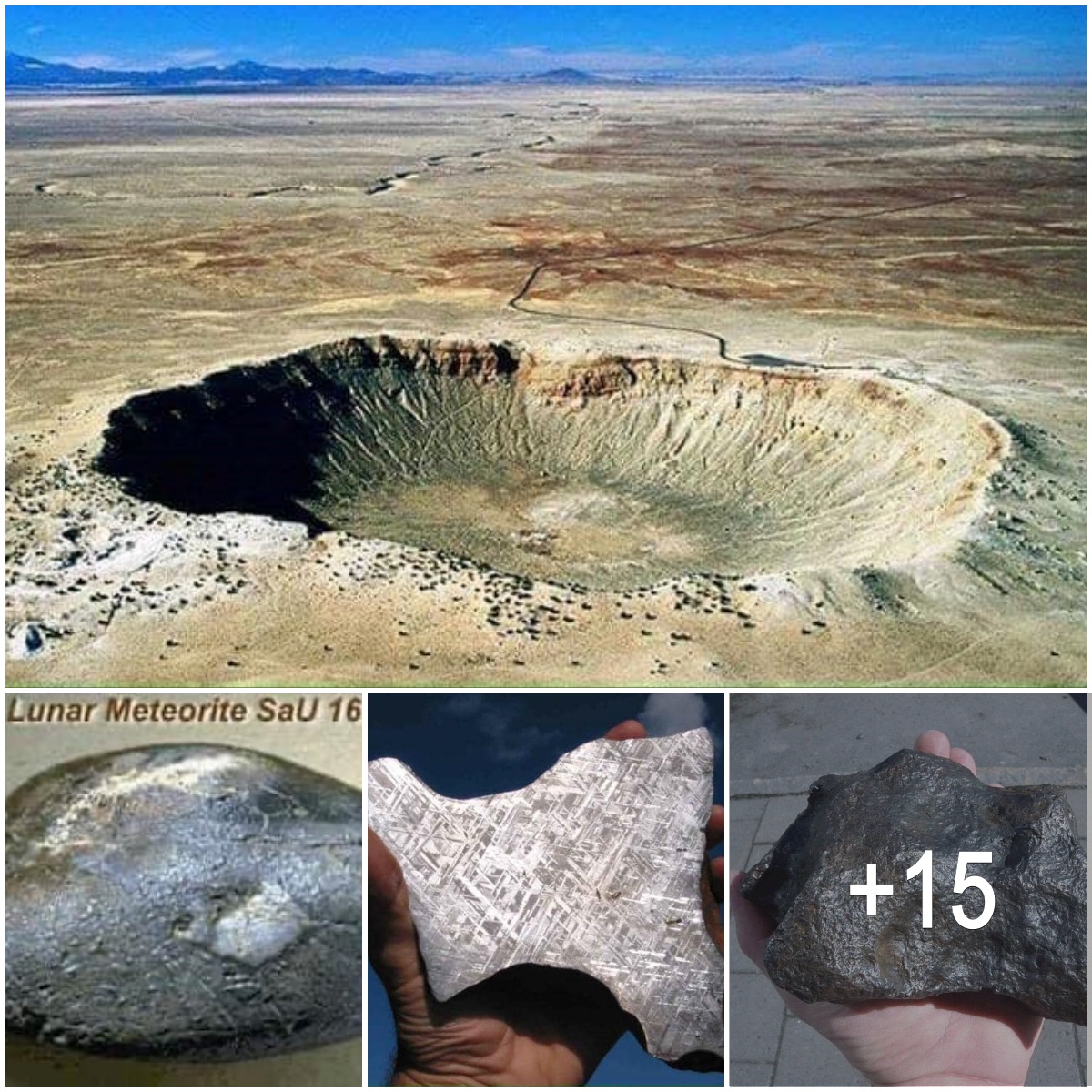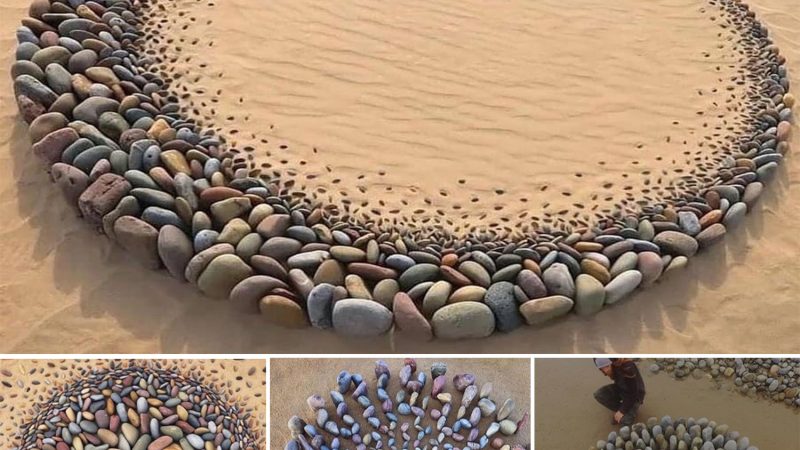Shooting stars, or meteors, are bits of interplanetary material falling through Earth’s atmosphere and heated to incandescence by friction.
Meteors & Meteorites
Shooting stars, or meteors, are bits of interplanetary material falling through Earth’s atmosphere and heated to incandescence by friction. These objects are called meteoroids as they are hurtling through space, becoming meteors for the few seconds they streak across the sky and create glowing trails.
Scientists estimate that 44 tonnes (44,000 kilograms, about 48.5 tons) of meteoritic material falls on the Earth each day. Several meteors per hour can usually be seen on any given night. Sometimes the number increases dramatically – these events are termed meteor showers. Some occur annually or at regular intervals as the Earth passes through the trail of dusty debris left by a comet. Meteor showers are usually named after a star or constellation that is close to where the meteors appear in the sky. Perhaps the most famous are the Perseids, which peak around 12 August every year. Every Perseid meteor is a tiny piece of the comet Swift-Tuttle, which swings by the Sun every 135 years. Other meteor showers and their associated comets are the Leonids (Tempel-Tuttle), the Aquarids and Orionids (Halley), and the Taurids (Encke). Most comet dust in meteor showers burns up in the atmosphere before reaching the ground; some dust is captured by high-altitude aircraft and analyzed in NASA laboratories.
Chunks of rock and metal from asteroids and other planetary bodies that survive their journey through the atmosphere and fall to the ground are called meteorites. Most meteorites found on Earth are pebble to fist size, but some are larger than a building. Early Earth experienced many large meteorite impacts that caused extensive destruction.
The three main classes of meteorites are Iron, Stony-Iron, and Stony. There are also (albeit rare) lunar and mars meteorites.
One of the most intact impact craters is the Barringer Meteorite Crater in Arizona, about 1 kilometer (0.6 mile) across, formed by the impact of a piece of iron-nickel metal approximately 50 meters (164 feet) in diameter. It is only 50,000 years old and so well preserved that it has been used to study impact processes. Since this feature was recognized as an impact crater in the 1920s, about 170 impact craters have been identified on Earth.
A very large asteroid impact 65 million years ago, which created the 300-kilometer-wide (180-mile-wide) Chicxulub crater on the Yucatan Peninsula, is thought to have contributed to the extinction of about 75 percent of marine and land animals on Earth at the time, including the dinosaurs.
Well-documented stories of meteorite-caused injury or death are rare. In the first known case of an extraterrestrial object to have injured a human being in the U.S., Ann Hodges of Sylacauga, Alabama, was severely bruised by a 3.6-kilogram (8-pound) stony meteorite that crashed through her roof in November 1954.
Meteorites may resemble Earth rocks, but they usually have a burned exterior. This fusion crust is formed as the meteorite is melted by friction as it passes through the atmosphere. There are three major types of meteorites: the “irons,” the “stones,” and the stony-irons. Although the majority of meteorites that fall to Earth are stony, more of the meteorites that are discovered long after they fall are irons – these heavy objects are easier to distinguish from Earth rocks than stony meteorites. Meteorites also fall on other solar system bodies. Mars Exploration Rover Opportunity found the first meteorite of any type on another planet when it discovered an iron-nickel meteorite about the size of a basketball on Mars in 2005, and then found a much larger and heavier iron-nickel meteorite in 2009 in the same region. In all, Opportunity has discovered six meteorites during its travels on Mars.
More than 50,000 meteorites have been found on Earth. Of these, 99.8 percent come from asteroids. Evidence for an asteroid origin includes orbits calculated from photographic observations of meteorite falls projected back to the asteroid belt; spectra of several classes of meteorites match those of some asteroid classes; and they are very old, 4.5 to 4.6 billion years. However, we can only match one group of meteorites to a specific asteroid – the eucrite, diogenite, and howardite igneous meteorites come from the third-largest asteroid, Vesta. Asteroids and the meteorites that fall to Earth are not pieces of a planet that broke apart, but instead are the original diverse materials from which the planets formed. The study of meteorites tells us much about the earliest conditions and processes during the formation and earliest history of the solar system, such as the age and composition of solids, the nature of the organic matter, the temperatures achieved at the surface and interiors of asteroids, and the degree to which materials were shocked by impacts.
The remaining 0.2 percent of meteorites is split roughly equally between meteorites from Mars and the moon. The over 60 known martian meteorites were blasted off Mars by met
Hits: 2
